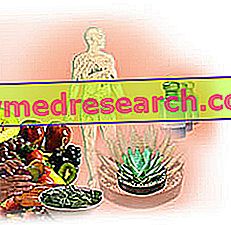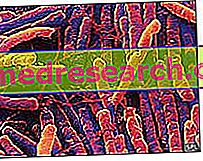What are hemorrhoids?
Hemorrhoids are soft and very vascularized pads located in the terminal part of the rectum. With their presence they contribute to maintaining continence, swelling and deflating depending on the situation.

The term hemorrhoids is therefore used improperly to describe a circumstance in which the hemorrhoidal veins dilate excessively forming varicose veins.
Today, in the light of modern theories, we prefer to talk about hemorrhoids as a pathology that affects the supporting structures of the anorectal canal causing the sliding down of these tissues. The collapse of the rectal mucosa pushes the internal hemorrhoids outwards which in turn drag the external ones (prolapse) with them, causing the typical symptoms of the pathology.
At the base of these alterations there are genetic predispositions influenced by lifestyle and other contributing factors such as pregnancy, constipation or chronic diarrhea.
Hemorrhoids are the most frequent anal pathology, so much so that it is estimated they affect at least once in life about 90% of the population. In reality the characteristic symptoms of this disease are common to several proctological disorders, often mistakenly labeled as haemorrhoids.
For this reason, the diagnosis of hemorrhoids is entirely up to a doctor, who must be contacted beforehand to make sure that apparently banal symptoms do not hide more important pathologies.
Deepening Articles on Hemorrhoids
Hemorrhoids: the relationship with the doctor A bit of anatomy Hemorrhoids: the symptomsHemorroids: causes and risk factors Hemorrhoidal thrombosisPreventing hemorrhoids Care and treatment Hemorrhoids treatment Medicines for hemorrhoids Hemorrhoid tea Hemorrhoids diet Hemorrhoids diet Methods Hemorrhoids Diet Method THDEmorroids: natural remediesEmorroids and herbal medicineClassification and Types

In the first case they remain localized within the anal canal, are not visible to the naked eye and are generally painless. During defecation they can go outside (prolapse) and then return spontaneously. Only when prolapse is complete or associated with fissures does internal hemorrhoids cause pain
The external hemorrhoids are instead visible to the naked eye, they develop close to the anus, they come out easily and appear as hard and painful protuberances.
In relation to the extent of the pathology hemorrhoids are classified into four degrees of severity:
- I degree hemorrhoids : they remain inside the anus and for this reason they are visible only at anoscopic examination. The patient becomes aware of their presence due to bleeding, while pain is often absent
- II degree hemorrhoids : normally they remain inside and come out only at the moment of defecation; they revert spontaneously, causing bleeding and discomfort
- III degree hemorrhoids : they proliferate permanently on the outside, so as to require manual intervention to reposition themselves in the anal canal, they are generally painful
- Grade IV hemorrhoids : prolapse and complete and hemorrhoids are perpetually outside; it is not possible to bring them back inside with the simple manual maneuver.
The pain can however appear, even in a rather intense manner, at any stage of the haemorrhoid disease. Thrombosis is for example one of the most frequent acute complications that can affect both external and, more rarely, internal hemorrhoids. In this situation there is the formation of a thrombus (blood clot) inside the inflamed varicose vein, which is associated with swelling, itching and intense pain. The repetition of these episodes requires the surgical removal of hemorrhoids (hemorrhoidectomy) which is also used to resolve the most serious cases (grade IV hemorrhoids, excessive and persistent bleeding).
Hemorrhoids - What are they and why do they become inflamed?
X Go to the Video Page Go to Wellness Destination Watch the video on youtubeRelationship with the doctor
The characteristic symptoms of hemorrhoids are a source of concern and embarrassment for most patients. Often the problems closely affect the intimate sphere of the subject causing difficulties in exposing the symptoms to your doctor.
For this reason there is a general tendency to go to a specialist only in a rather advanced stage, when the symptoms experienced are particularly important. This is obviously a wrong behavior, which can only further worsen the situation. Many of the characteristic symptoms of haemorrhoids are for example common to various diseases, some of them very serious and for this reason, they can only be diagnosed by specialist examinations.
For all these reasons, when the typical symptoms of hemorrhoids appear, you must overcome reticence and taboos by contacting your doctor. Early intervention will help cure the disease.



